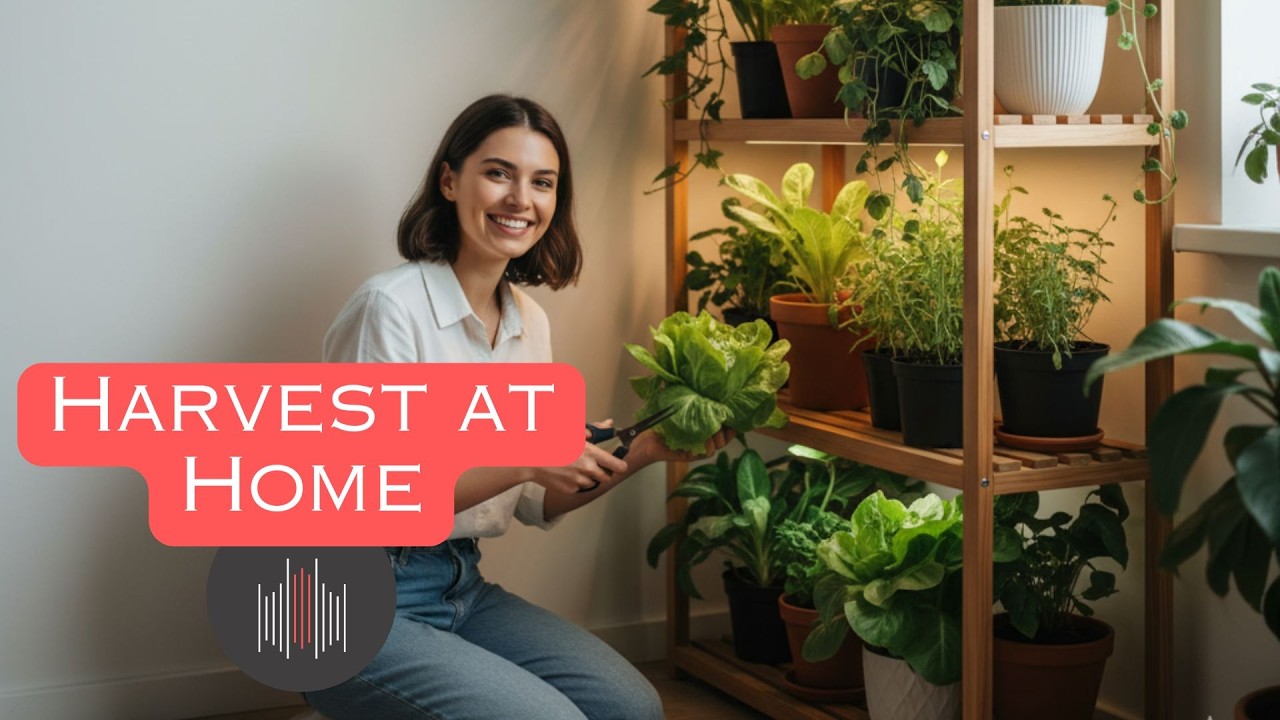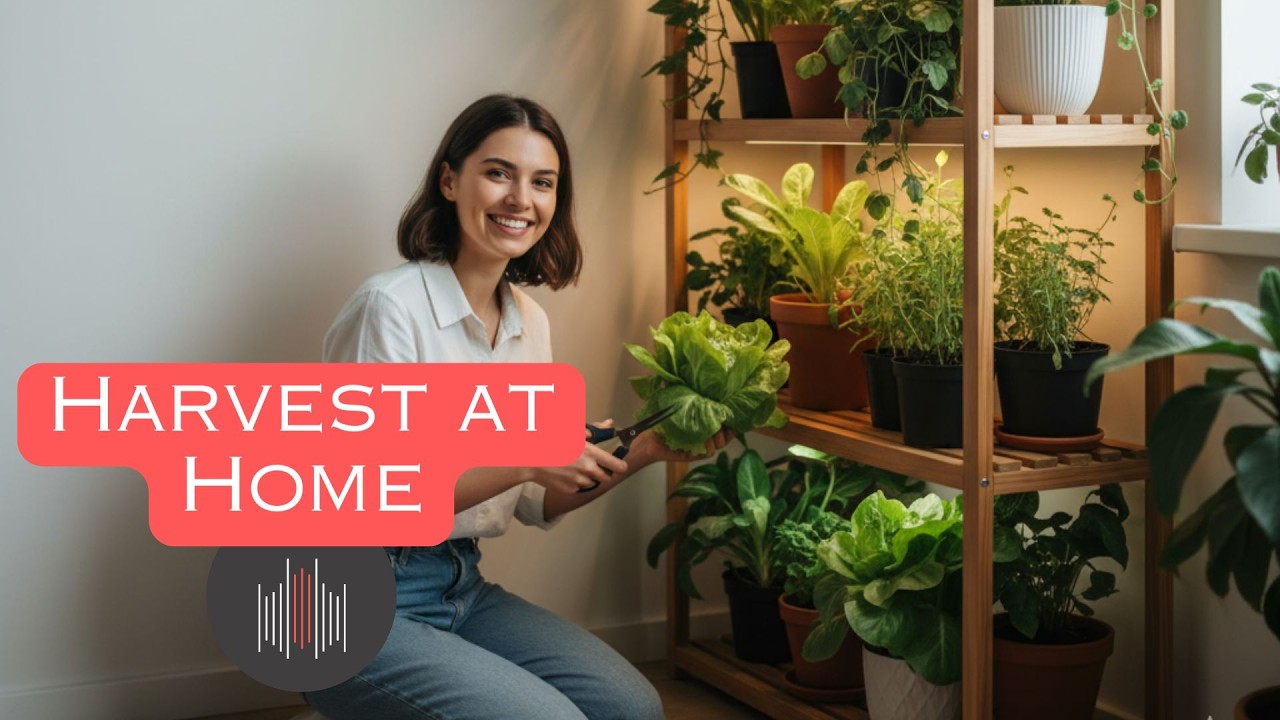Indoor Vegetables to Grow for Fresh Year-Round Harvests
“`html
Indoor Vegetables to Grow for Fresh Year-Round Harvests
Are you tired of bland store-bought vegetables that lack flavor and freshness? Growing your own indoor vegetables might just be the solution you need for fresh year-round harvests. Imagine the delightful crunch of fresh lettuce, the vibrant color of home-grown tomatoes, and the aromatic scent of herbs, all available at your fingertips. With the rise of urban gardening and an increasing interest in self-sustainability, cultivating vegetables indoors has become an accessible and rewarding option for many enthusiasts and beginners alike.

Indoor gardening allows you to enjoy the benefits of gardening regardless of the weather conditions outside. This means you can cultivate a variety of vegetables all year long, optimizing your space while saving money on grocery bills. Moreover, growing indoor vegetables contributes positively to your health by providing organic produce free from harmful pesticides. In this comprehensive guide, we will explore the best indoor vegetables to grow for fresh year-round harvests, tips on cultivating them, and how to create the optimal environment for growth.
1. Leafy Greens: The Ultimate Indoor Vegetables
Why Choose Leafy Greens?
Leafy greens are some of the easiest and most rewarding indoor vegetables to cultivate. Varieties like spinach, kale, and lettuce flourish in controlled environments and provide an abundance of nutrients. These greens are perfect for those who crave fresh salads or healthy smoothies, making them a staple for any indoor gardener.
Best Practices for Growing Leafy Greens Indoors
To successfully grow leafy greens indoors, start by selecting quality seeds and appropriate containers. You can use pots or even recycled containers as long as they have drainage holes. Fill them with high-quality potting soil and ensure they receive adequate light, either from a sunny windowsill or a grow light. Leafy greens thrive in cooler temperatures, so maintain your indoor climate between 60°F – 70°F for optimal growth.
Harvesting and Maintenance Tips
For most leafy greens, you can start harvesting within a few weeks of planting. Use the cut-and-come-again method, which allows the plant to continue growing after you harvest a portion of its leaves. Regular watering, combined with the right amount of fertilization, will keep your plants healthy and thriving.
2. Herbs: Flavorful Indoor Companions
Why Grow Herbs Indoors?
Herbs like basil, cilantro, and parsley are excellent indoor vegetables that not only enhance the flavors of your meals but also fill your space with delightful aromas. Given their compact size and quick growth, herbs are perfect for indoor gardening on windowsills and kitchen counters.
Tips for Successful Indoor Herb Gardening
To grow herbs successfully indoors, ensure they receive plenty of sunlight—at least six hours a day. Choose pots with good drainage and use a well-draining potting mix. Regularly trimming your herbs will encourage bushy growth and prevent them from becoming leggy. Be mindful of overwatering; most herbs prefer to dry out somewhat between waterings.
Harvesting Your Indoor Herbs
When harvesting herbs, snip off leaves as needed. Regular harvesting promotes growth and prevents flowering, which can sometimes diminish flavor. Consider creating a mini herb garden and experimenting with different varieties to add freshness to your culinary creations.
3. Fruiting Plants: Indoor Tomatoes and Peppers
Create Your Own Mini Vegetable Garden
Growing fruiting plants like tomatoes and peppers indoors can significantly enhance your kitchen’s versatility. These plants not only produce delicious fruits but also contribute vibrancy to your indoor space with their colorful displays.
Setting Up for Success: Environment for Fruiting Plants
Choose containers with good drainage and fill them with nutrient-rich soil. Fruiting plants generally need more warmth and brighter light than leafy greens, so aim for a temperature of 65°F – 80°F and utilize grow lights if natural light is limited. Consistent watering and fertilizing every two weeks will support healthy fruit growth.

Harvesting Tomatoes and Peppers
Tomatoes and peppers can take anywhere from 60 to 90 days to reach harvestable size. Harvest them as soon as they reach their desired color for the best flavor. The satisfaction of harvesting your first home-grown tomato or pepper can be a rewarding experience!
4. Root Vegetables: Carrots and Radishes Indoors
The Unexpected Indoor Garden Veggies
Root vegetables, such as carrots and radishes, are often overlooked for indoor gardening, but they can thrive in containers. These veggies are nutritious and can be easily added to various dishes or enjoyed as snacks.
Requirements for Growing Root Vegetables Indoors
Root vegetables require deeper containers than other types due to their growth habits. Ensure your pots are at least 12 inches deep and filled with loose, well-aerated soil. Carrots generally need about 3 months to mature, while radishes can be harvested in just a few weeks—making them great for impatient gardeners!
Harvesting and Enjoying Root Vegetables
When it’s time to harvest, gently pull the carrots from the soil and twist off the radishes. Enjoy them raw or cooked in your favorite meals, feeling the pride of serving freshly harvested vegetables from your indoor garden!
5. Growing Beans and Peas: Easy Indoor Legumes
A Nutritional Powerhouse
Beans and peas are excellent additions to any indoor vegetable garden, providing ample nutrition in a compact space. They grow upward, making them ideal for scenarios where floor space is limited.
How to Cultivate Beans and Peas Indoors
Start by providing sturdy trellises to support the vines of your beans and peas. These plants appreciate moderate temperatures and well-drained soil enriched with organic matter. Regularly watering and providing ample light are key factors to their success.
Harvesting and Using Legumes in Cooking
Harvest your beans and peas once they reach full size and are tender. These legumes can be consumed fresh or stored for future meals, ensuring a consistent supply of nutrition straight from your indoor garden.
Conclusion & FAQs on Indoor Vegetable Gardening
In conclusion, cultivating indoor vegetables like leafy greens, herbs, fruiting plants, root vegetables, and legumes offers a sustainable and enriching way to enjoy fresh produce year-round. Whether you’re a seasoned gardener or just starting, growing your own vegetables indoors is both rewarding and beneficial to your health and wallet. Now, let’s address some frequently asked questions to clear up any lingering inquiries related to indoor vegetable gardening.
How much light do indoor vegetables need?
Most indoor vegetables require at least 6 hours of natural light per day; however, if you are limited by sunlight, consider using grow lights to supplement their needs.
Can I grow indoor vegetables without a lot of space?
Absolutely! Many indoor vegetables, such as herbs, dwarf varieties of tomatoes, and leafy greens, can thrive in small spaces, making them perfect for apartments and small homes.
What are the best containers for indoor vegetables?
Choose pots with good drainage that are the appropriate size for your chosen vegetable. Self-watering containers can also be beneficial for maintaining moisture levels.
How often should I water my indoor vegetables?
Watering frequency will vary depending on the plant type and your indoor climate. Generally, it’s best to water when the top inch of soil feels dry. Be careful not to overwater, as this can lead to root rot.
Are there any pests I should worry about when growing indoors?
Yes, common pests like aphids and spider mites can still invade indoor gardens. Keeping your plants healthy and maintaining cleanliness can help prevent infestations. If pests are found, consider using natural remedies such as neem oil to eliminate them.
By following the guidelines in this article, you can successfully cultivate a variety of indoor vegetables, providing you and your family with fresh, delicious produce year-round. Happy gardening!
“`